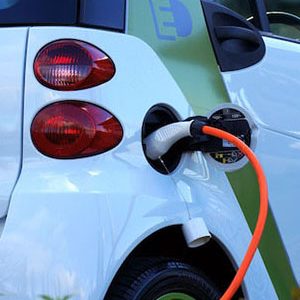The sustainability movement has emerged as a 21st century megatrend, and it shows no signs of abating. Record heat in Europe, wildfires in the U.S. We
The sustainability movement has emerged as a 21st century megatrend, and it shows no signs of abating. Record heat in Europe, wildfires in the U.S. West, floods in Pakistan, drought in China, and accelerating ice cap melt in Greenland and Antarctica have driven home to many the looming threat of climate change.
Meanwhile, the New York Times declared in December “the sustainable industrial revolution is just getting started,” and even heavy industries like shipping, steel, and plastics are beginning to grasp the importance of an ecologically sustainable future — developing products like “green steel,” which is a fossil-free steelmaking process.
But hurdles remain, including questions about transparency, accountability, traceability, trust, data integrity, and even greenwashing (making false or insincere environmental claims.) Or as the Times asked: “Can some of history’s highest-polluting industries be trusted?” in spite of their professed good intentions.
This is where blockchain technology could make a difference. Like the sustainability movement itself, blockchain tech is global, 21st century, and mostly unformed though likely to be shaped soon by new laws and rules. Blockchains can simplify and lower costs of ESG (environmental, social and governance) reporting, build trust in “collected” data, develop new eco-related trading markets, and suggest new sources of innovation.

In March, for instance, automaker Volkswagen announced that it was using blockchain technology to help ensure that electric vehicle (EV) charging stations were using sustainable sources to recharge their electric cars. This move is aimed at consumers who want validation that the energy being used to recharge their vehicles isn’t coming from brown coal-powered electric companies or the like. BMW is said to be developing something similar.
Elsewhere, energy giant Shell announced in June the launch of Avelia, a sustainable aviation fuel (SAF) solution for business travel. The project uses a public blockchain to promote and validate SAF, which can reduce lifecycle emissions by up to 80% compared to conventional jet fuel.
Many now foresee a blossoming partnership between environmentalists and blockchain developers, especially as Ethereum with its big Merge, as well as other networks, move closer to carbon zero and even carbon negative platforms.
“I continue to believe that putting Paris Agreement carbon markets on Ethereum and connecting the national carbon accounts of the world, is blockchain’s killer app,” Joseph Pallant, climate innovation director at Ecotrust Canada and founder and executive director of the Blockchain for Climate Foundation, tells Magazine.
But if this promise of a blockchain/ESG alliance is to reach fruition, some questions need to be resolved, including:
- Are public permissionless blockchains sufficiently scalable to handle the sheer amount of data to be tracked for sustainability use cases?
- Looking off-chain, do blockchain-based sustainability-related projects face an oracle problem? Who is going to attest, for example, that carbon offset credits entered on the blockchain are legitimate — and that they are really doing something beneficial for the environment?
- Finally, blockchain technology might be a useful tool in the quest to develop a global sustainable future, but is it a necessary one? Does the sustainability movement really need public blockchains to succeed?
We are pleased announce the launch of the “Pilot Project on Peer to Peer (#P2P) Trading of Rooftop #Solar Power on #Blockchain” in Lucknow, Uttar Pradesh ~The first of its kind project in #SouthAsia and #India
Tags: @rejipillai @UPPCLLKO @PowerLedger_io pic.twitter.com/iydmQz9cm1
— India Smart Grid Forum (@IndiaSmartGridF) December 17, 2020
Tokenizing for more efficient markets
Many think that blockchain tech can make ESG-related markets more efficient, including the rapidly growing Voluntary Carbon Market, or VCM, where parties voluntarily buy and sell carbon credits that represent certified carbon removals or reductions of greenhouse gasses (GHGs).
Corporations can purchase carbon credits to meet their carbon neutrality commitments. “A significant proportion of carbon credits issued this year have been minted on-chain,” Charlie Moore, head of Carbon and ESG Solutions at Chainlink Labs, tells Magazine, adding:
“The carbon credit market has historically been manual, slow, opaque, and inefficient. By moving carbon credit markets on-chain, the market inherently becomes automated, fast, transparent, and highly efficient.”
Globally, carbon dioxide (CO2) permits grew to $851 billion in 2021, a gain of 164% compared with the previous year, according to Refinitiv, with most trading taking place within the European Union.
But multiple challenges remain in scaling Web3 carbon markets, adds Moore, including the lack of market standards. “In…
cointelegraph.com
